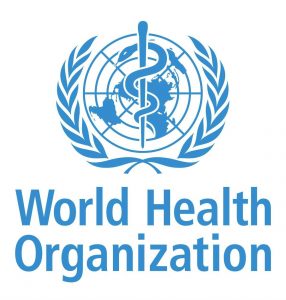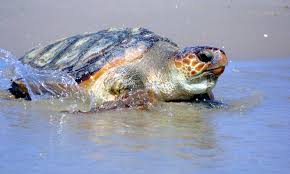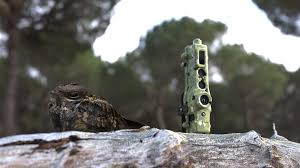Today’s Current Affairs: 17th February 2025 for UPSC IAS exams, State PSC exams, SSC CGL, State SSC, RRB, Railways, Banking Exam & IBPS, etc
Table of Contents
Gravehawk System:

Ukraine has reportedly acquired a new weapon system to defend against the barrage of missiles unleashed by Russia: the Gravehawk hybrid surface-to-air missile system.
- Gravehawk System is a short-range surface-to-air missile system developed by the United Kingdom.
- It is designed to address short-range threats, particularly those posed by fast-moving airborne objects.
- It is mounted on an all-terrain vehicle chassis, allowing for rapid deployment and mobility on the ground.
- It is equipped with infrared-guided missiles, including the AIM-132 ASRAAM and the Wympel R-73.
- The missiles can reach speeds of up to Mach 2.5 and engage targets at a range of approximately 12 miles, making them effective against drones, cruise missiles, and low-flying aircraft.
- One of the system’s key advantages is its passive infrared guidance, which eliminates the need for radar emissions that could expose its location to enemy forces.
- The containerized launch system also incorporates electro-optical and infrared targeting cameras, allowing remote operation so that operators can fire missiles from a safe distance.
Yamuna River : Cleaning Effort

A large-scale effort to clean the heavily polluted River Yamuna commenced recently, guided by a four-pronged strategy, aimed to restore the river within three years.
- Yamuna is the major tributary of the Ganga River.
- It rises in the Himalayas, from the Yamunotri Glacier, at the height of 4,421 meters.
- Originating near Banderpooch peaks at a height of 6,387 meters at Yamunotri Glacier, it travels a length of 1,376 kilometers before merging with River Ganges at Sangam in Prayagraj, Uttar Pradesh.
- It is the longest river in India which does not directly flow to the sea.
- The river water flows through the states of Uttarkhand, Himachal Pradesh, Haryana, Delhi, Uttar Pradesh and Rajasthan out of which only Rajasthan does not fall in its riparian zone.
- It has four main tributaries in the Himalayan region: Rishi Ganga, Hanuman Ganga, Tons and Giri. In the plains, the main tributaries are Hindon, Chambal, Sind, Betwa and Ken. Tons, being the major tributary, contributes to about 60 percent flow of the Yamuna.
- The Chambal River is Yamuna’s biggest tributary on the right.
- The confluence of the two rivers is an especially sacred place to Hindus and is the site of annual festivals as well as the Kumbh Mela, which is held every 12 years.
Measles : Comeback

Measles, a highly contagious virus, is making a comeback in the U.S., particularly in states like Texas due to lower vaccination rates and international travel.
- Measles is a highly contagious and serious airborne disease.
- It is caused by a virus in the paramyxovirus family, and is normally passed through direct contact and the air.
- The virus infects the respiratory tract, and then spreads throughout the body, causing severe disease, complications and even death.
- The first sign of measles is usually high fever, beginning about 10 to 14 days after exposure to the virus and lasting four to seven days.
- A runny nose, cough, red and watery eyes, and small white spots inside the cheeks can develop in the initial stage.
- A rash erupts after several days, usually on the face and upper neck. The rash spreads over about three days, eventually reaching the hands and feet, and lasts five to six days before fading.
- Any non-immune person (not vaccinated or vaccinated but did not develop immunity) can become infected.
- Unvaccinated young children and pregnant persons are at the highest risk of severe measles complications.
- Treatment: No specific antiviral treatment exists for measles.
International Classification of Diseases: 2025 Edition

The World Health Organization (WHO) has released the 2025 edition of the International Classification of Diseases 11th Revision (ICD-11).
- International Classification of Diseases is a flagship World Health Organization product that serves as the basis for identifying health trends and statistics at country level and worldwide.
- ICD is at the foundation of WHO’s Fourteenth General Programme of Work efforts to accelerate progress towards health-related Sustainable Development Goals (SDGs), addressing inequalities and achieving relevant national health targets.
- It serves a broad range of uses globally and provides critical knowledge on the extent, causes and consequences of human disease and death worldwide via data that is reported and coded with the ICD.
- Clinical terms coded with ICD are the main basis for health recording and statistics on disease in primary, secondary and tertiary care, as well as on cause of death certificates.
- In India, the Central Bureau of Health Intelligence (CBHI) is an agency under the Ministry of Health and Family Welfare that serves as the WHO Collaboration Centre for ICD-related activities.
Loggerhead Turtle : Recent Study

A recent study revealed that the loggerhead turtle can learn and remember the magnetic signature of an area and does a ‘turtle dance’ when in a location that they associate with food.
- Loggerhead Turtle is a species of oceanic turtle belonging to the family Cheloniidae.
- It is named Loggerhead for their large heads that support powerful jaw muscles.
- It is the world’s largest hard-shelled turtle, slightly larger at average and maximum mature weights than the Green sea turtle and the Galapagos tortoise.
- It is also the world’s second largest extant turtle after the leatherback sea turtle.
- It uses the geomagnetic field as a map when navigating large distances.
- It has a cosmopolitan distribution, nesting over the broadest geographical range of any sea turtle. It inhabits the Atlantic, Indian and Pacific Oceans, and the Mediterranean Sea.
- It is omnivorous, feeding mainly on bottom-dwelling invertebrates, such as gastropods, bivalves, and decapods. It has a greater list of known prey than any other sea turtle.
- Conservation status:
- IUCN: Vulnerable
- Threats: Bycatch in fishing gear, Climate change, Direct harvest of turtles and eggs, Loss and degradation of nesting habitat, Ocean pollution/marine debris.
TrailGuard AI System:

Similipal Tiger Reserve is the first reserve where TrailGuard AI system has shown success as an ‘anti-poaching tool.
- TrailGuard AI System is an end-to-end, camera-based alert system designed for enhancing wildlife conservation and promoting human-wildlife coexistence in remote areas.
- The system combines durable outdoor hardware, on-the-edge AI algorithms, and real-time transmission capabilities, and can be deployed along trails or access points in areas of interest.
- Its battery lasts for 6 months to one year based on the number of photos it sends
- It autonomously detects target objects, and transmits real-time alerts that can trigger rapid-response to entry by poachers or illegal loggers, wildlife entering agricultural or pastoral lands, or status of endangered or exotic invasive species.
- It transmits human and wildlife activities in remote areas in under 30 seconds, enabling real-time interventions.
- They operate on a low-power mode by default but switch to a high-power mode when they sense movement, and capture an image.
- The camera then performs AI inference on the edge, meaning it uses the chip inside to sort between various object classes such as ‘animals’, ‘humans’, and ‘vehicles’ in the image.
- If the AI deems it necessary, it autonomously transmits an image using the cellular system attached to the camera to an end-user in 30-40 seconds.
Jacob Kiplimo Breaks Half-Marathon World Record in Barcelona:
Jacob Kiplimo of Uganda broke the world half-marathon record in Barcelona, finishing the 21.0975 km race in 56 minutes and 42 seconds. The 24-year-old improved the previous record by 48 seconds, surpassing Ethiopia’s Yomif Kejelcha’s time from November 2024.
Campa Cola Replaces Thums Up as IPL 2025 Co-Presenter:
Campa Cola, a beverage brand owned by Reliance Consumer Products, has secured the co-presenting rights for the Indian Premier League (IPL) 2025. The deal, valued at Rs 200 crore, marks a significant shift in India’s beverage market, traditionally dominated by global giants like Coca-Cola. The move highlights Reliance’s strategy to rapidly scale its presence across India and to introduce more products, including sports drinks, during the IPL season.Campa Cola has acquired the Rs 200 crore co-presenting rights for IPL 2025. This sponsorship replaces Coca-Cola’s Thums Up, which held the same rights in the previous season.
38th National Games 2025 Concludes with Grand Ceremony:
The 38th National Games 2025 came to a grand conclusion in Haldwani, Uttarakhand, marking the end of an event that showcased India’s growing sports culture. Hosted from January 28 to February 14, 2025, the Games emphasized sustainability under the theme ‘Green Games’, with initiatives aimed at reducing environmental impact. The event saw participation from over 10,000 athletes across 35 sports disciplines, making it one of the biggest sporting events in India.
Imagine a world with more women in science Campaign Launched By UNESCO:
UNESCO has launched the “Imagine a world with more women in science” campaign to mark the 10th anniversary of the International Day of Women and Girls in Science (February 11). The campaign emphasizes the positive impact of diverse perspectives in scientific fields and encourages greater participation of women using the hashtag #EveryVoiceInScience. The United Nations General Assembly (UNGA) declared February 11 as the International Day of Women and Girls in Science in 2015, aiming to bridge the gender gap in STEMM (Science, Technology, Engineering, Mathematics & Medicine).
West Bengal’s “Nodi Bandhan” Scheme and Ghatal Masterplan:
The West Bengal government, under Chief Minister Mamata Banerjee, has introduced the “Nodi Bandhan” scheme in the 2025-26 budget to enhance riverine development and prevent erosion along the Ganga-Padma. Alongside this, a significant allocation for the Ghatal Masterplan has been made to address flooding in West Midnapore. These initiatives aim to mitigate natural calamities, boost livelihoods, and strengthen infrastructure in the river-dependent regions of the state.
India to Host First Regional Social Justice Dialogue in 2025:
India is set to host the first-ever Regional Dialogue on the Global Coalition for Social Justice on February 24-25, 2025, at Bharat Mandapam, New Delhi. Organized by the Ministry of Labour and Employment in collaboration with the Confederation of Indian Industry (CII) and the Employers’ Federation of India (EFI), the event aims to bring together global stakeholders to discuss inclusive and sustainable social policies.The dialogue aligns with India’s broader commitment to social justice, ensuring fair employment opportunities, social security, and inclusive economic growth. With representatives from the Asia-Pacific region and beyond, the conference will explore policies that drive responsible business practices and improve social justice frameworks.
Axis Bank Pledges ₹104 Crore to Ashoka University for Research Growth:
Axis Bank has committed ₹104 crore to Ashoka University over the next four years. The funding aims to strengthen the university’s PhD and Post-Doctoral programs while enhancing its research capabilities in Neurosciences, Behavioral Studies, and Physics. This partnership, formalized through a Memorandum of Understanding (MoU), is expected to create new opportunities for students and researchers while addressing critical global challenges.




